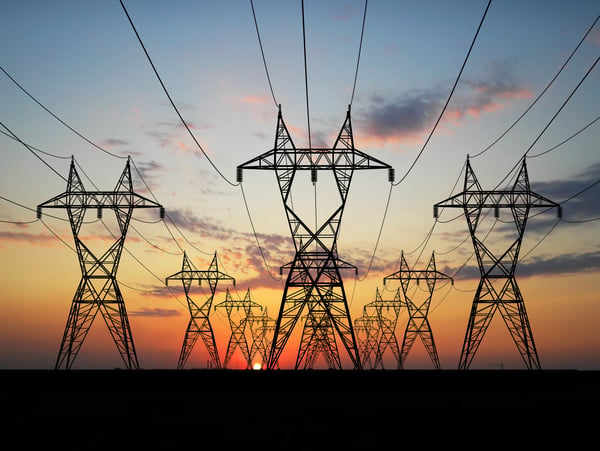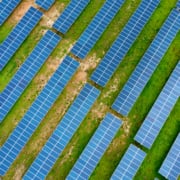
Interconnection Reform Critical to the Efficiency of Energy Markets

The U.S. power grid is undergoing a period of rapid change, with federal agencies such as the Department of Energy (DOE) and the Federal Energy Regulatory Commission (FERC) initiating programs and regulatory actions to address the integration of new generation and transmission resources. According to a recent DOE report, the U.S. grid is facing the retirement of 104 GW of firm capacity (generation that can operate continuously) by 2030,[1] and the planned addition of 209 GW of new generation in the same period.[2] The White House is concerned that the retirement of “baseload” power plants will impede President Trump’s economic goals; as such, press reports say that the administration is expected to issue new emergency orders preventing fossil fuel plants from retiring.[3]
This transition is occurring alongside forecasts of rapid load growth, with electricity supply expected to expand at a rate much higher than in previous decades. Load growth that looks to double the $2.3 trillion utility industry within 10 years. This need to integrate new resources and manage legacy retirements comes in the context of evolving policy, economic, and reliability considerations. The median time for a new generator to achieve interconnection has increased by 70% over the past decade, with timelines now approaching five years in many regions. Withdrawal rates from interconnection queues are high, with 80% of projects ultimately dropping out, and only 20% of projects applying for interconnection from 2000 to 2018 reaching commercial operation.[4]
These delays have been associated with several system-wide effects, including:
- Increased system congestion and potential impacts on market price signals.
- Challenges to grid reliability and resilience, particularly as older plants retire.
- Potential implications for meeting state and federal energy policy objectives.
- Delays for large loads, such as data centers and manufacturing, in obtaining grid connections.
The impact is felt all across U.S. energy markets, which rely on efficient deployment of energy resources to ensure fair competition and optimal prices.
- Sources of Interconnection Delays
Major system operators experience varying interconnection queue timelines, with most currently ranging from 1.5 to 4 years.[5] However, as “[a]ctive grid connection requests are more than double the total installed capacity of the US power plant fleet (2,600 vs. 1,280 GW),” agencies face increasing pressure to evaluate (and approve) interconnection requests.[6]
Many factors have led to this interconnection request processing backlog, including:
- Transparency and Data Limitations: Developers often submit exploratory interconnection requests due to limited information on grid capacity and upgrade costs, resulting in speculative requests and queue congestion.
- Process Fragmentation: Interconnection requirements, procedures, study criteria, and cost allocation rules vary across regions and approving authorities, leading to unpredictability and inefficiency.
- Cost Allocation Practices: In many regions, developers are responsible for the full cost of network upgrades triggered by their projects, which can result in high and hard-to-predict costs.
- Transmission Constraints: Network upgrades are often identified on a project-by-project basis, rather than through coordinated regional investment.[7]
- Interconnection Reform Will Accompany Greater Systemic Changes
As FERC member Judy Chang states: “[O]ur interconnection queue is creating strains — not just by itself a strain — but it’s straining the way we think about competitive markets and open access to transmission. . . . These are not separate things . . . these are all very much connected.”[8]
Federal agencies have responded to interconnection and transmission challenges with a range of regulatory and programmatic actions:
- FERC Order 2023: Introduces cluster studies, first-ready/first-served queue management, readiness requirements, and the publication of transmission capacity “heatmaps.”[9]
- FERC Order 1920: Requires regional transmission planners to develop 20-year plans that integrate state policies, resource plans, and anticipated load growth, with scenario-based planning and cost allocation requirements.[10]
- DOE Programs: The DOE’s Transmission Facilitation Program (TFP), Grid Resilience and Innovation Partnerships (GRIP), and Loan Programs Office (LPO) provide financial incentives, technical assistance, and loan guarantees for grid infrastructure.[11] The DOE has also issued a Request for Information to identify high-priority projects and policy mechanisms, which is discussed in greater detail below.[12]
- Executive Orders: Recent directives have addressed permitting, grid optimization, and the deployment of advanced technologies.[13]
- DOE’s Request for Information (RFI): Overview and Objectives
In September 2025, the DOE issued a Request for Information (RFI) seeking public input on large-scale generation, transmission, and grid infrastructure projects that can accelerate the speed to power for manufacturing, industrial, and artificial intelligence/data center electricity demand growth. The RFI is directed at state energy offices, public utility commissions, electric utilities, regional transmission organizations, independent system operators, transmission and generation developers, large energy users, and other stakeholders.
The RFI specifically seeks:
- Identification of large-scale projects (including new interregional transmission, reconductoring, reactivation of retired generation, and new generation portfolios) that could support incremental loads of 3 to 20 GW.
- Information on high-priority geographic areas or zones where targeted federal investment could unlock or accelerate economic activity tied to electric load growth.
- Suggestions on how DOE funding, financing, and technical assistance programs (such as TFP, GRIP, and LPO) can be best utilized to support grid infrastructure expansion.
- Input on regulatory, permitting, planning, and operational challenges that are threatening the ability of critical projects to meet demand.
- Recommendations for improving coordination among federal, state, and local agencies, and for leveraging public-private partnerships.
- Conclusion: Ongoing Debates and the Role of DOE’s RFI
The U.S. power sector is navigating a period of rapid change, with significant attention focused on the interconnection process and its implications for market efficiency, reliability, and policy objectives. Federal and state agencies, utilities, developers, and other stakeholders are engaged in ongoing discussions regarding the most effective approaches to address the identified challenges. The DOE’s RFI represents a key step in gathering actionable information from a broad range of stakeholders to inform future federal actions, funding priorities, and program design. The RFI is intended to help identify critical projects, geographic priorities, and policy mechanisms that can accelerate grid capacity expansion and support the integration of new loads and resources. The outcomes of these efforts, and the input received through the RFI, are expected to shape the future structure and operation of the U.S. electric grid, as well as the policy and regulatory frameworks that govern interconnection and transmission planning.
[1] United States Department of Energy, “Report on Evaluating U.S. Grid Reliability and Security,” July 7, 2025.
[2] United States Department of Energy, “Report on Evaluating U.S. Grid Reliability and Security,” July 7, 2025.
[3] Zack Coleman, “Trump Energy Department eyes new must-run orders for power plants,” POLITICO Pro, September 25, 2025.
[4] Will Gorman et al., “Grid connection barriers to renewable energy deployment in the United States,” Joule, Volume 9, Issue 2, 2025, 101791.
[5] From Harvey AI – based on a review of publicly available data related to PUC reports.
[6] Will Gorman et al., “Grid connection barriers to renewable energy deployment in the United States, Joule, Volume 9, Issue 2, 2025, 101791.
[7] Will Gorman et al., “Grid connection barriers to renewable energy deployment in the United States,” Joule, Volume 9, Issue 2, 2025, 101791.
[8] S&P Global, Inside FERC, “Interconnection delays undermine markets, demand better grid planning: Chang,” August 1, 2025.
[9] FERC, “FERC Takes on Long-Term Planning with Historic Transmission Rule,” May 13, 2024, https://www.ferc.gov/news-events/news/ferc-takes-long-term-planning-historic-transmission-rule.
[10] FERC, Order No. 2023, November 6, 2023, https://www.ferc.gov/media/order-no-2023.
[11] United States Department of Energy, “Accelerating Speed to Power/Winning the Artificial Intelligence Race: Federal Action to Rapidly Expand Grid Capacity and Enable Electricity Demand Growth” (Sept 18, 2025).
[12] United States Department of Energy, “Accelerating Speed to Power/Winning the Artificial Intelligence Race: Federal Action to Rapidly Expand Grid Capacity and Enable Electricity Demand Growth” (Sept 18, 2025).
[13] United States Department of Energy, “Accelerating Speed to Power/Winning the Artificial Intelligence Race: Federal Action to Rapidly Expand Grid Capacity and Enable Electricity Demand Growth” (Sept 18, 2025).
This post is as of the posting date stated above. Sidley Austin LLP assumes no duty to update this post or post about any subsequent developments having a bearing on this post.




